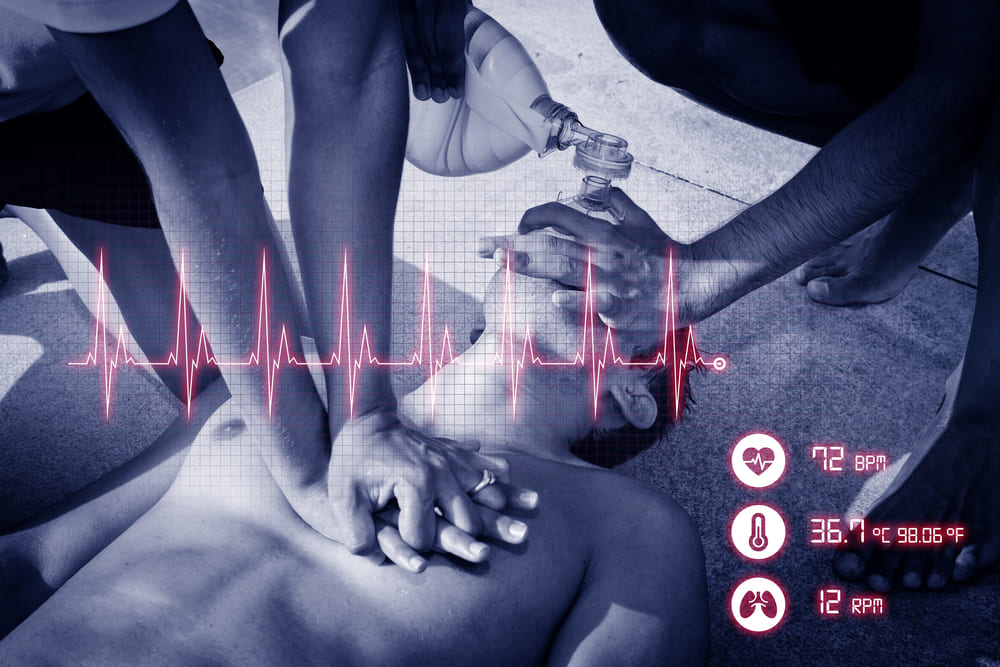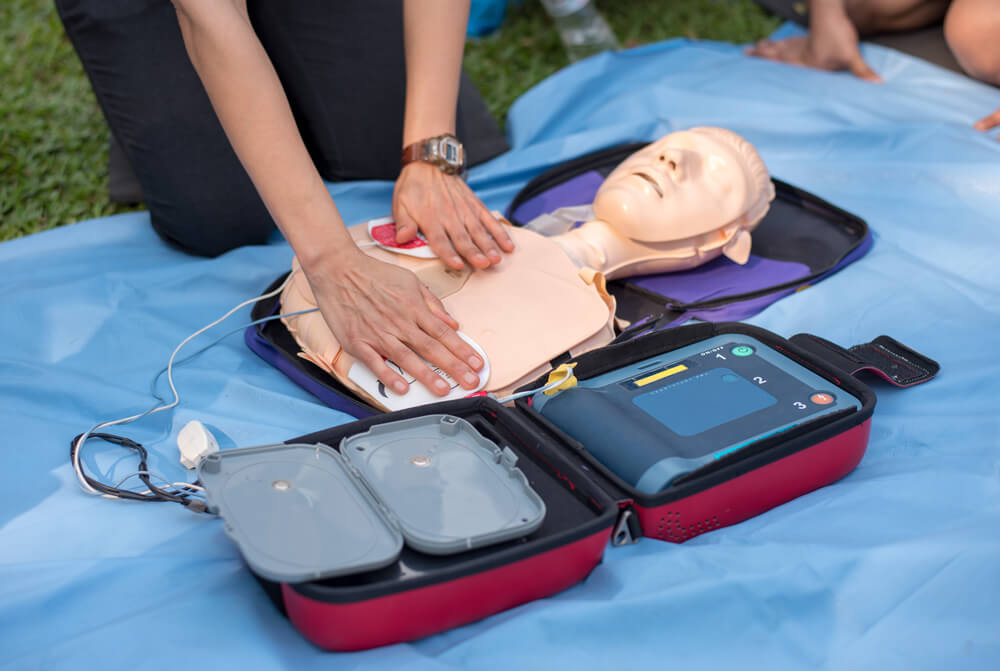


Cardiopulmonary resuscitation, commonly known as CPR, is a life-saving technique that has stood as a critical component in emergency response for decades. CPR uses chest compressions to ensure blood flow to the brain during crises.
People trained in CPR are those we like to call “Heartstrong Heroes.” Their readiness and credentials to help as first responders are immensely significant.
However, the traditional approach to CPR has its limitations. Despite the best efforts of the immediate helpers, it requires precise technique and the ability to accurately assess and respond to the victim’s condition. This is where technology is now coming to the assistance of CPR to help produce better outcomes.
Entering the digital age, we are witnessing a revolutionary shift in how CPR is taught, practiced, and enhanced through technology. The advancements in digital tools and medical technology are reshaping the landscape of cardiopulmonary resuscitation. These innovations are not just refining traditional methods but are also introducing new dimensions of efficiency, accuracy, and accessibility.
Let’s explore some exciting and groundbreaking ways through which technology is not just complementing but revolutionizing the practice of CPR in the digital age.
There are three key areas where innovative technologies are significantly impacting CPR.
According to the American Red Cross, “An AED, or automated external defibrillator, is a sophisticated, yet easy-to-use, medical device that can analyze the heart’s rhythm and, if necessary, deliver an electrical shock, or defibrillation, to help the heart re-establish an effective rhythm.”
Modern AEDs are great examples of technology, designed to be user-friendly, highly portable, and extremely effective in treating sudden cardiac arrest. These devices now have integrated guidance systems, including verbal and visual prompts. They instruct CPR givers on how best to use them, even while being put into action.
The traditional classroom-based approach to CPR training is being transformed by digital innovation.
Virtual Reality (VR) and Augmented Reality (AR) technologies are now being employed to create immersive, interactive training experiences. These tools allow learners to practice CPR in various simulated scenarios, making the training more engaging and realistic.
Integrating health monitoring features in wearable technology like smartwatches and fitness trackers is another frontier in CPR technology.
According to CPR Certification HQ, these devices are increasingly capable of detecting signs of a cardiac event, such as irregular heart rhythms or sudden drops in blood oxygen levels. These wearables can alert the user, bystanders, or even emergency services upon detecting such conditions.

According to Yohei Okada et al., writing in Resuscitation Plus, data analysis and machine learning (including AI) are also helping in the area of CPR.
Integrating data analytics and artificial intelligence (AI) into emergency medical services is revolutionizing how we approach cardiac crises.
Predictive analytics is playing a pivotal role in identifying potential cardiac events before they occur. By analyzing large datasets that include health records, lifestyle information, and real-time biometric data, AI algorithms can detect patterns and risk factors associated with cardiac arrest.
Machine learning, a powerful branch of AI, is transforming CPR from a one-size-fits-all approach to a more customized treatment method.
By analyzing historical health data and real-time monitoring information, machine learning algorithms can provide tailored recommendations for CPR. For example, these algorithms can analyze a patient’s medical history, including factors like age, pre-existing conditions, and medication use, to adjust the CPR method accordingly.
According to My CPR Now, the long wait times before medical assistance arrives to help with an emergency are now being addressed with telemedicine and intelligent technology.
Telemedicine platforms have opened a new frontier in providing real-time assistance during CPR, bridging the distance between on-site emergency responders and remote medical professionals.
In critical moments where every second counts, these platforms empower bystanders or first responders with immediate expert guidance. Through video calls or specialized communication tools, medical professionals can observe and assess the situation remotely, offering specific instructions on performing CPR.
Integrating remote guidance and telemedicine into emergency services significantly advances coordinated medical response.
When a cardiac emergency is reported, telemedicine systems can immediately connect the caller or a bystander with medical professionals while simultaneously alerting emergency services. This ensures that CPR guidance begins even before the arrival of professional help, reducing the critical time gap in providing life-saving interventions.

Patients who have other chronic ailments may need special care during and after CPR, where technology now can help enormously.
Wearable technology and innovative medical devices can also help rescue an emergency patient by continuously monitoring vital health parameters. If a patient has chronic ailments such as obesity, cholesterol, diabetes, and hypertension – along with other hereditary factors – these can all have a multiplicative impact on the heart.
Tracking data on these ailments can be crucial during a cardiac emergency, as it provides responders and medical professionals with a comprehensive view of the patient’s pre-existing conditions, allowing them to make informed decisions during and after CPR.
AI-driven predictive analytics can use historical health data to identify patients at higher risk of cardiac events due to underlying conditions.
If patients go for regular medical checkups, they can have their blood pressure levels and blood sugar symptoms kept under observation, along with vital data on their obesity conditions or signs of cholesterol. This can lead to proactive measures, such as lifestyle modifications or medication adjustments, to reduce the risk of a cardiac arrest occurring in the first place.
Adoption of new technologies always comes with its challenge areas and ethical debates. With CPR and its new technology frontiers, here are some areas to be careful of.
According to Karim Abouelmehdi et al., writing in the Journal of Big Data, the integration of technology in healthcare, particularly in areas such as CPR and patient monitoring, brings to the forefront the critical issue of data privacy and security.
The confidentiality of personal health data is paramount, as large volumes of sensitive information are collected, stored, and processed. This necessitates stringent measures to protect against unauthorized access and potential breaches.
The effectiveness of new technologies in CPR demands that users must have sufficient “technology literacy.”
Ensuring that medical professionals – especially CPR givers – are adequately trained and comfortable with these new tools is vital. Ongoing training and re-certification is critical to keep pace with fast-evolving technologies and practices.
One thing to remember about technology and CPR is that we must leverage these advancements to enhance the quality of emergency cardiac care, ultimately improving patient outcomes and saving more lives. Technology is only useful if it can help achieve significantly better results with CPR than ever before.
Also, behind technology, a caring and trained human must always be ready to lend a hand in a medical crisis. For every one of us yet to learn CPR, this is a clarion call: Be CPR-aware. Save lives. Be a Heartstrong Hero.